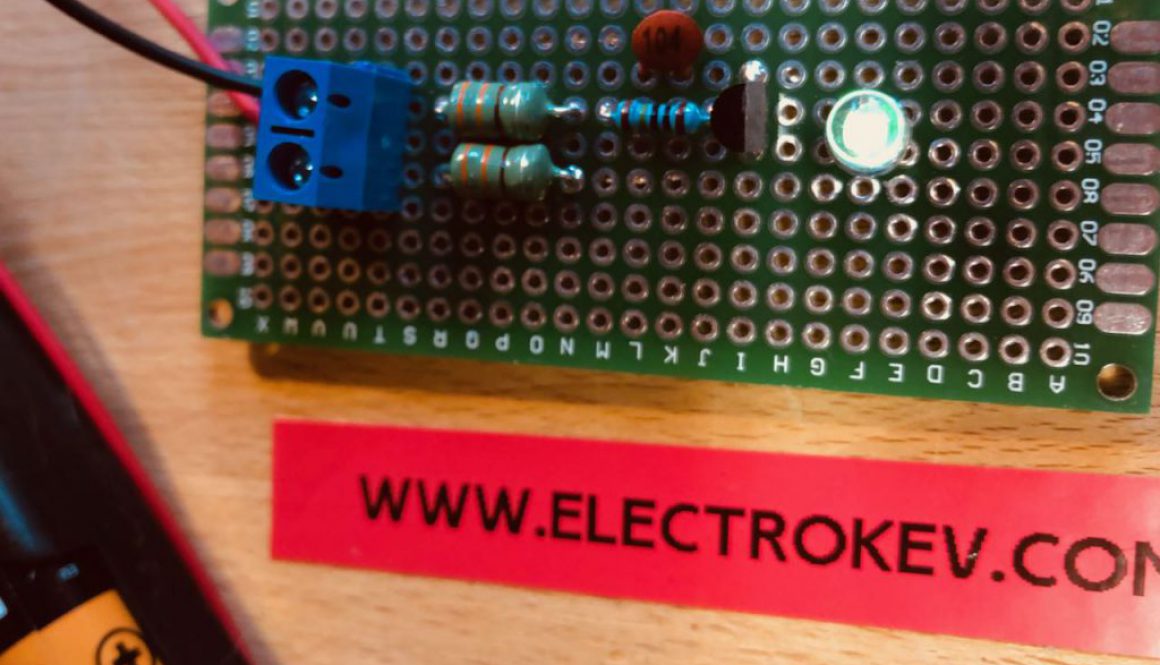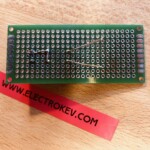Everlasting ‘Flashing!’ Light
A light that will shine from the moment you are born until you are 18? One single AA battery? Not possible?
The Everlasting light is powerered using the circuit commonly known as the JouleThief. The Joule Thief came to fruition in 1999 when an article by Z. Kapernik was published in the November edition of ‘Everyday Practical Electronics’. Written for the ‘Ingenuity Unlimited’ section of the magazine, the circuit describes a clever little design that utilises almost all of a battery cell. The term ‘Joule Thief’ was coined by Clive Mitchell or BigClive as he is known on his very popular YouTube channel. This is a great channel and I highly recommend it if you enjoy electronics.
Whereas a 1.5 volt battery might be considered ‘Used’ when the voltage drops from 1.5v to maybe 0.9v at best, the Joule Thief carries on functioning right down to around 0.3v. Some advanced versions of the circuit can even drive the cell down to 0.1v.
The following circuit is a modified but simple build of the Joule Thief using Axial coils rather than a traditional wound coil. This makes it very simple for those new to electronics. One of the few difficulties building a Joule Thief is ensuring the coils are wound the correct way. With Axial coils this is not an issue; and so long as the coils are placed side by side, the circuit will work.
There is a wealth of information online regarding the Joule Thief and how it works, but in essence this device is a ‘Blocking Oscillator’ that switches the transistor on and off many thousands of times per second. The coils work together to create a voltage booster, which when paired with an LED appear to show a solidly lit light.
Ordinarily the value of the resistor feeding the base of the transistor would dictate how ‘hard’ the transistor was driven. Often a 1K resistor is used and this will provide a very bright light. In this example, a 10 MegaOhm resistor is used alongside a capacitor to extend the battery life exponentially at the expense of brightness. It’s fair to say the light produced will not light the room, but this project is not about brightness; its about endurance!
The circuit draws just under 13 microamps of power. Considering an AA battery may typically store 2 Million microamp hours of power, this would theoretically drive the LED for 153,846 hours, or 17.56 years. Of course this is very misleading. The battery data sheets that provide this information assume certain power draw characteristics that are more typical than such a low current. It is also quite possible that after 18 years the natural degradation of the battery would see more power loss than the LED load itself. Furthermore, unless extremely high quality batteries were used, its quite possibly the battery would simply leak in that timespan.
But theoretical numbers are what Joule Thieves are all about, and so with that in mind, the project creates a light that will light for almost 18 years. We hope!
This circuit uses simple parts. A single AA battery, and a common NPN transistor. The BC337. LED colours have diferent current draw characteristics, and a green colour has been chosen in this project for its immense efficiency at a low current. The circuit is highly modifiable. Adjustments to the resistor, the inductors, or the capacitor will see different output voltages, light level and longevity.
Keeping the inductors pressed close together will result in a fast flashing light. Creating a tiny gap will speed the flash rate up so fast it will appear as though the light is constantly on.
This project is now available to buy in the Shop as a Kit.
All components supplied, including solder and instructions. All you need is a cheap soldering iron, some time and a small space to build. Have fun 🙂

























